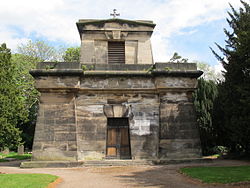
Duke of Sutherland is a title in the Peerage of the United Kingdom which was created by William IV in 1833 for George Leveson-Gower, 2nd Marquess of Stafford. A series of marriages to heiresses by members of the Leveson-Gower family made the Dukes of Sutherland one of the richest landowning families in the United Kingdom. The title remained in the Leveson-Gower family until the death of the 5th Duke of Sutherland in 1963, when it passed to the 5th Earl of Ellesmere from the Egerton family.

Earl of Sutherland is a title in the Peerage of Scotland. It was created circa 1230 for William de Moravia and is the premier earldom in the Peerage of Scotland. The earl or countess of Sutherland is also the chief of Clan Sutherland.

Earl Granville is a title that has been created twice, once in the Peerage of Great Britain and once in the Peerage of the United Kingdom. It is now held by members of the Leveson-Gower family.

Anne Sutherland-Leveson-Gower, Duchess of Sutherland VA, 1st Countess of Cromartie in her own right and known as the Marchioness of Stafford from 1849 to 1861, was a British peeress.

Harriet Elizabeth Georgiana Sutherland-Leveson-Gower,Duchess of Sutherland, styled The Honourable Harriet Howard before her marriage, was Mistress of the Robes under several Whig administrations: 1837–1841, 1846–1852, 1853–1858, and 1859–1861; and a great friend of Queen Victoria. She was an important figure in London's high society, and used her social position to undertake various philanthropic undertakings including the protest of the English ladies against American slavery.

Granville Leveson-Gower, 1st Marquess of Stafford, KG PC, known as Viscount Trentham from 1746 to 1754 and as The Earl Gower from 1754 to 1786, was a British politician from the Leveson-Gower family.

The Trentham Estate, in the village of Trentham, is a visitor attraction located on the southern fringe of the city of Stoke-on-Trent in Staffordshire, United Kingdom.
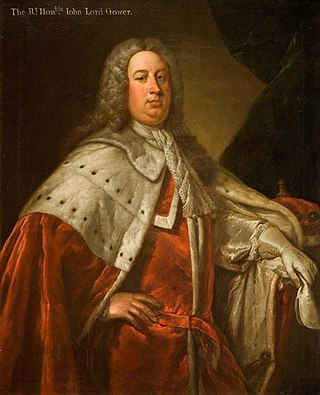
John Leveson-Gower, 1st Earl Gower PC, was an English Tory politician and peer who twice served as Lord Privy Seal from 1742 to 1743 and 1744 to 1754. Leveson-Gower is best known for his political career in the British Parliament, where he sat in the House of Lords as a leading member of the Tory Party before defecting to serve in various Whig-dominated government ministries until his death.
John Leveson-Gower, 1st Baron Gower PC was a member of the Leveson-Gower family. He was the son of Sir William Leveson-Gower, 4th Baronet and his wife Jane Granville. He was born in Sittenham, Yorkshire. His maternal grandparents were John Granville, 1st Earl of Bath and his wife Jane Wyche, daughter of Sir Peter Wyche.

George Granville Leveson-Gower, 1st Duke of Sutherland KG, PC, known as Viscount Trentham from 1758 to 1786, as Earl Gower from 1786 to 1803 and as the Marquess of Stafford from 1803 to 1833, was an English politician, diplomat, landowner and patron of the arts from the Leveson-Gower family. He was the wealthiest man in Britain during the latter part of his life. He remains a controversial figure for his role in the Highland Clearances.

George Granville Sutherland-Leveson-Gower, 2nd Duke of Sutherland, KG, styled Viscount Trentham until 1803, Earl Gower between 1803 and 1833 and Marquess of Stafford in 1833, was a British Whig MP and peer from the Leveson-Gower family.
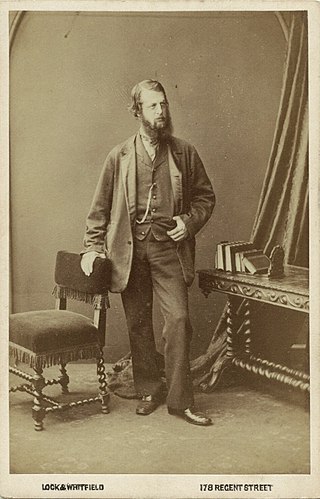
George Granville William Sutherland-Leveson-Gower, 3rd Duke of Sutherland KG FRS, styled Viscount Trentham until 1833, Earl Gower in 1833 and Marquess of Stafford between 1833 and 1861, was a British politician from the Leveson-Gower family.
Cromartie Sutherland-Leveson-Gower, 4th Duke of Sutherland,, styled Lord Cromartie Sutherland-Leveson-Gower until 1858, Earl Gower between 1858 and 1861 and Marquess of Stafford between 1861 and 1892, was a British peer and politician from the Leveson-Gower family.
This is a list of people who have served as Custos Rotulorum of Staffordshire.

Lilleshall Hall is a large former country house and estate in the fields of Lilleshall, Shropshire, England.

Leveson-Gower, also Sutherland-Leveson-Gower, is the name of a powerful British noble family. Over time, several members of the Leveson-Gower family were made knights, baronets and peers. Hereditary titles held by the family include the dukedom of Sutherland, as well as the ancient earldom of Sutherland and the earldom of Granville. Several other members of the family have also risen to prominence.
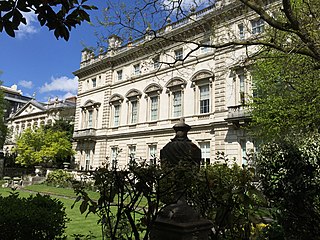
Bridgewater House is a townhouse located at 14 Cleveland Row in the St James's area of London, England. It is a Grade I listed building.

Millicent Sutherland-Leveson-Gower, Duchess of Sutherland RRC was a British society hostess, social reformer, author, editor, journalist, and playwright, often using the pen name Erskine Gower. Her first husband was Cromartie Sutherland-Leveson-Gower, 4th Duke of Sutherland. By her two later marriages, she was known as Lady Millicent Fitzgerald and Lady Millicent Hawes, the latter of which was the name she used at the time of her death.
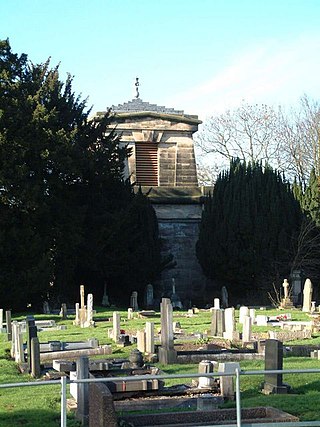
Charles Heathcote Tatham, was an English architect of the early nineteenth century.
Susanna Leveson-Gower, Marchioness of Stafford (1742–1805), styled Lady Susanna Stewart from 1742 to 1768, Countess Gower until 1786, Marchioness of Stafford until 1803 and Dowager Marchioness of Stafford until her death in 1805, was a British noblewoman, who in 1768 became the wife of Granville Leveson-Gower, 1st Marquess of Stafford and a member of the Leveson-Gower family.
